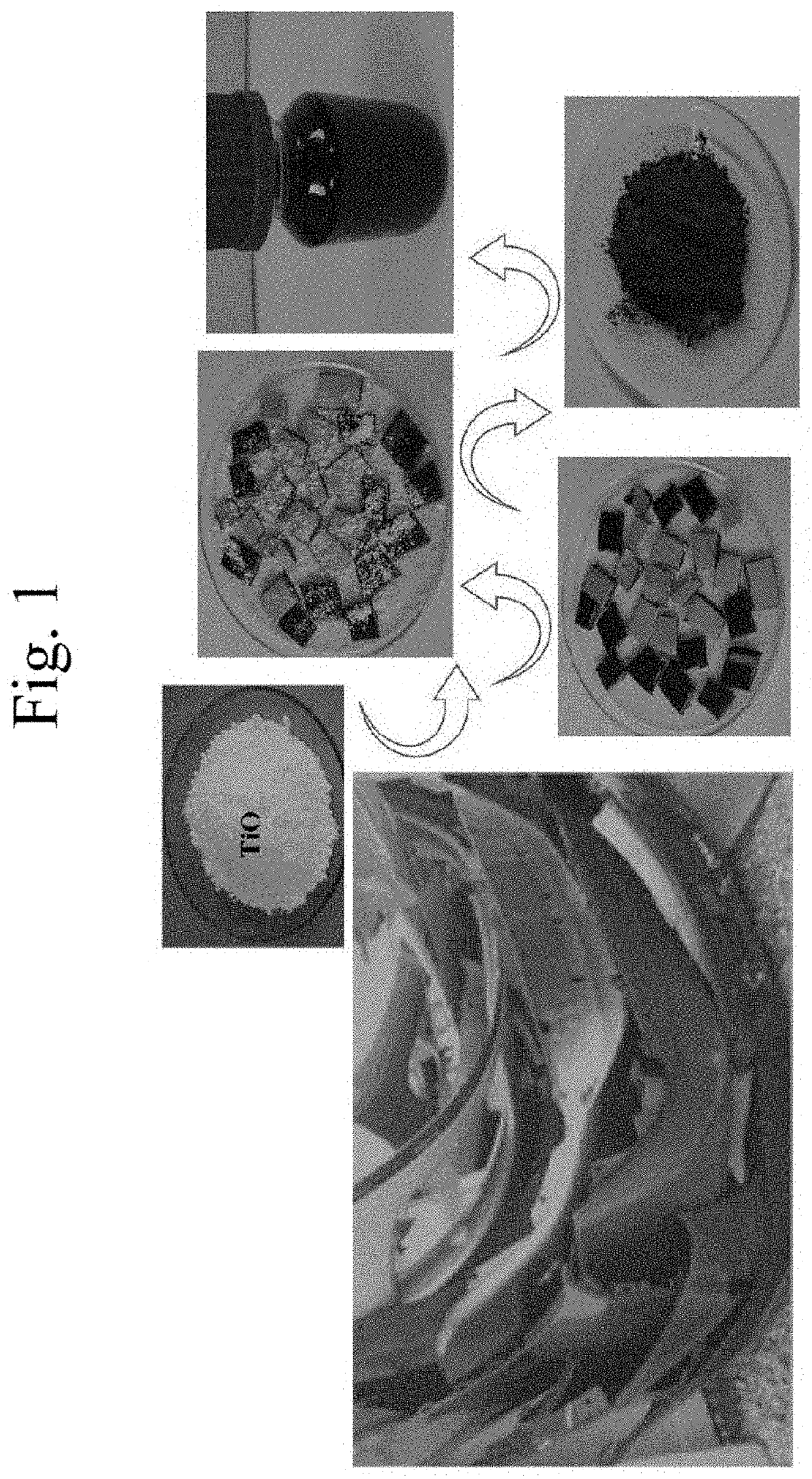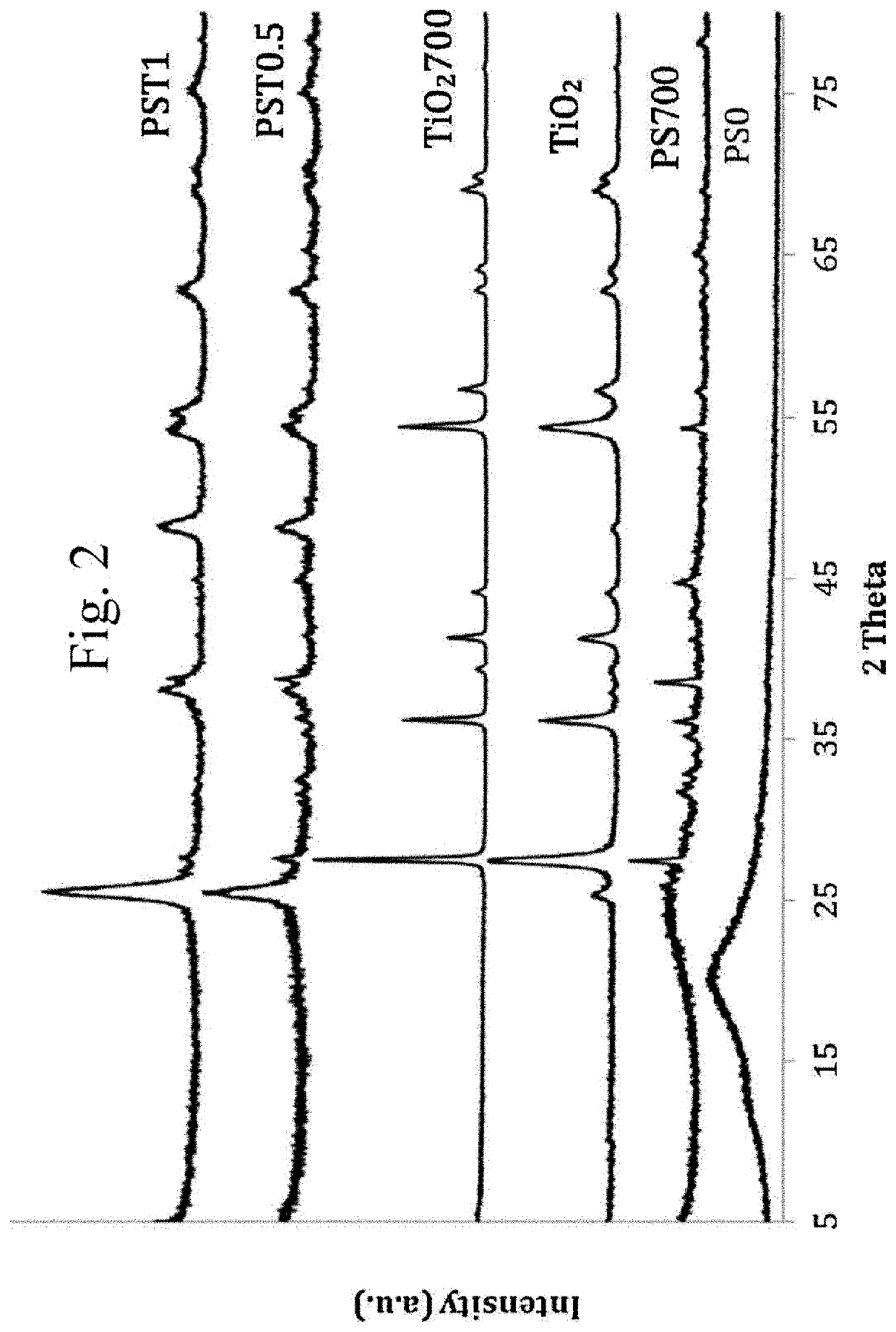Titania-carbon dot-reduced graphene oxide composites, their make, and use
a graphene oxide and carbon dots technology, applied in water treatment compounds, special form destructive distillation, water/sludge/sewage treatment, etc., can solve the problems ofjiang not revealing carbonaceous materials, tiosub>2 /sub>particles, graphene oxide decorated with carbon dots,
- Summary
- Abstract
- Description
- Claims
- Application Information
AI Technical Summary
Benefits of technology
Problems solved by technology
Method used
Image
Examples
examples
[0071]Synthesis of TiO2 nanoparticles: TiO2 nanoparticles were synthesized by hydrolysis of TiCl4 followed by hydrothermal treatment, i.e., synthesis of (single) crystals depending on the solubility of minerals in hot water under high pressure. The crystal growth can be performed in an apparatus such as a steel pressure vessel, i.e., autoclave, in which a nutrient is supplied along with water. A temperature gradient can be maintained between the opposite ends of the growth chamber. At the hotter end the nutrient solute dissolves, while at the cooler end it is deposited on a seed crystal, growing the desired crystal. In a typical synthesis, 10 mL (17.3 g, 0.091 mol) of pre chilled TiCl4 was slowly added to 250 mL of distilled water under ice bath with vigorous stirring to obtain a suspension. After that, 5 g (0.083 mol) of urea was dissolved in the resulting suspension and then allowed to stir for 1 hour further, resulting in a second suspension. The second suspension was transferred...
PUM
| Property | Measurement | Unit |
|---|---|---|
| Temperature | aaaaa | aaaaa |
| Pore size | aaaaa | aaaaa |
| Wavelength | aaaaa | aaaaa |
Abstract
Description
Claims
Application Information
 Login to View More
Login to View More - R&D
- Intellectual Property
- Life Sciences
- Materials
- Tech Scout
- Unparalleled Data Quality
- Higher Quality Content
- 60% Fewer Hallucinations
Browse by: Latest US Patents, China's latest patents, Technical Efficacy Thesaurus, Application Domain, Technology Topic, Popular Technical Reports.
© 2025 PatSnap. All rights reserved.Legal|Privacy policy|Modern Slavery Act Transparency Statement|Sitemap|About US| Contact US: help@patsnap.com



